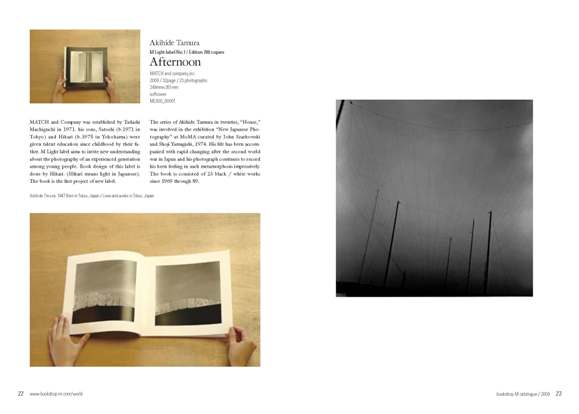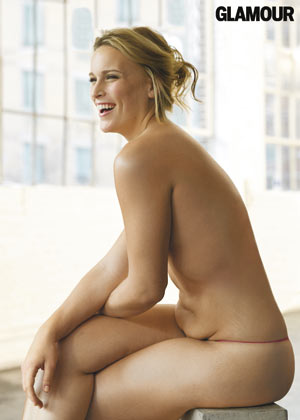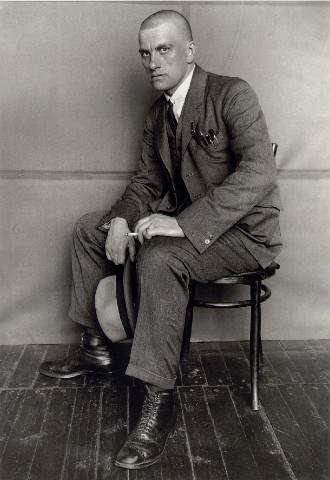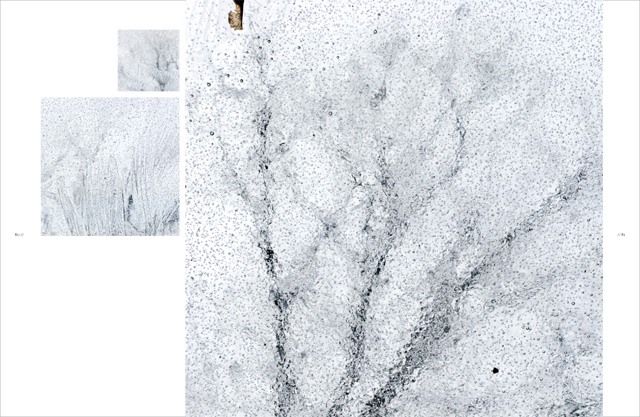A few months ago, Diederik Meijer asked me to guest 'curate' (staying true to my post on curating, I have to use those quote marks since this is more editing than curating... but I digress) a week of Japanese photography over on Bite! magazine. It has taken far longer than I thought it would to get it all together but the week starts today with Koji Onaka's Tokyo Candy Box, so please take the time to check it out.
Paris in Amsterdam
I have just written a piece on Michael Wolf's Paris Street View for edition 22, Peeping, of the excellent Foam Magazine run by the Amsterdam museum of the same name. The museum got as excited as I did about this new series and decided to go the extra mile by putting up an outdoor installation of 24 XXL prints from Paris Street View in Amsterdam's Zuidas area (on the street where Google has its Dutch office) which is in the process of being redeveloped. I made the trip up for the launch and to find out a bit more about the Amsterdam photo scene.
The Paris Street View installation is very impressive (which this terrible installation view taken with my phone camera does not do justice to at all) and the work takes on an added dimension when displayed in amongst the city, rather than just on the neutral white walls of a gallery or museum. Wolf likened it to a "monument to privacy lost" and these massive figures dotted around this modern urban landscape also create an interesting warped sense of scale, making the buildings in the background look like scale models. It will be interesting to see how people in the area react to the works over time and whether the work can provoke some further debate over these issues. (Update: Michael Wolf just kindly sent me some proper installation views so I have uploaded one of these instead).
I also swung by Foam itself. For a museum that only opened in December 2001 in a small European country, Foam cuts an impressive figure on the European photo scene. The venue is not huge, but they use the space intelligently and a look at their programme schedule shows their ability to combine crowd-pleasing fare with 'important' exhibitions.
The current programme is a great illustration of this as the ground floor is occupied by Amsterdam-born photographer and filmmaker, Ari Marcopoulos who has photographed street culture for several years on both US coasts. Although much of the photography in this exhibition left me cold, I was more interested in Marcopoulos's large-scale xerox prints which reveal the influence of Andy Warhol, for whom he was a darkroom printer. But the highlight of It might seem familiar has to be a 10-minute video of Marcopoulos and an accomplice skating down a very steep road in California wearing matching pastel blue suits. This is far more exhilarating and revealing of the culture that Marcopoulos has spent 30 years documenting.
The upper floor is devoted to an exhibition of vintage work by the Russian avant-garde artist, Alexander Rodchenko, which was first held at London's Hayward Gallery in 2008. This is a very complete look at the photographer's extraordinarily inventive and experimental career, from his early use of photography in graphic design in the 1920s to his later work on human movement. Every section of this show contains masterpieces, whether it be the early magazine covers, photograms or photomontages, the portraits or the later work on movement. The prints are all vintage and with a significant number coming from private collections this is a pretty unique opportunity to see this many quality Rodchenko's in one place.
Between Paris Street View, the Rodchenko exhibit and the city of Amsterdam itself, there are more than enough reasons to make a visit.
Unless You Will
Heidi Romano recently got in touch with me as a result of the Future of Photo-books discussion over on the Resolve blog, to tell me about her online photo-mag, Unless You Will, which "strives to showcase photographers who add layers of meaning and capture these feelings (...) of emotion or nostalgia". The magazine is well-designed and the quality of the work selected is excellent. Issue 3 has recently been released featuring five female photographers, including Romano herself. Interestingly Unless You Will only exists as a PDF at the moment as Heidi has "not been able to find a printer with affordable prices, without having to hand over complete control". So if any readers have any great printers to recommend to Heidi, who is based in Australia, then get in touch!
bookshop M

One of the discoveries that I made at Paris Photo this year was the Japanese bookseller, bookshop M, situated right at the entrance of the fair. There is so much work to see on the walls that I sometimes find it difficult to find the time to spend with all of the books that are on show (and in the case of Schaden, to wade through the crowd of people parked in front of his booth).
But bookshop M's minimalist stand did catch my attention. They have an interesting model, as they are actually an offshoot of the design studio, MATCH and company (the Japanese do like to muck around with capitalisation), which is run by the extremely talented art directing brothers, Satoshi and Hikari Machiguchi. Their father, Tadashi, was a renowned designer in the 'golden age' of Japanese photo-books (1960s and 1970s), and so they fell into the cauldron of photo-books from an early age, growing up surrounded by design but also by inks, papers and printing techniques. Their design work really stands out in an increasingly crowded photo-book world. Despite their education, their designs do not feel like 'retro' throwbacks to the 1970s, but instead they manage to be contemporary and, most importantly, extremely well-suited to their subject.
If you want proof you will have to get onto the internet, as bookshop M is an online-only venture: another interesting aspect of their model. The website is very well put together (the best I've seen in this field), with short slideshows showing the inside of all of the books that they sell. Also they have gone the extra mile and translated the site into (very approximate) English, which makes the whole experience even better as you are regularly treated to moments of hilarity.
At Paris Photo I picked up Akihide Tamura's Afternoon, a collection of 23 beautifully simple and sparse landscape photographs taken between 1969 and 1989. In a numbered and signed limited edition of 700, this was a bargain for 35 euros ($33 online). An extra bonus is that the book is not officially published until December 9, the first time I have spent two weeks with a book that doesn't really exist yet.
A picture of a woman
 I don't normally write about fashion photography on this blog, or go out of my way to see fashion images. E doesn't really buy magazines so it's not lying about the house either. But like any other person living in a big city, fashion photography is absolutely everywhere, something that we practically breathe in every time we step outside. In the case of major women's magazines, I find the images that they publish to be almost invisible given how repetitive they are.
I don't normally write about fashion photography on this blog, or go out of my way to see fashion images. E doesn't really buy magazines so it's not lying about the house either. But like any other person living in a big city, fashion photography is absolutely everywhere, something that we practically breathe in every time we step outside. In the case of major women's magazines, I find the images that they publish to be almost invisible given how repetitive they are.
The unhealthy fetishisation of thinness in fashion and women's magazines is not exactly breaking news. Angry opposing voices have been heard for some time on the issue, but little has changed except that we are probably likely to see more ultra-thin model flesh than before. When I came across this image (not flipping through Glamour magazine unfortunately, but on the Guardian website), it stopped me in my tracks. For a split-second I wondered whether this little belly had been photo-shopped onto this woman's body? That first reaction quickly turned into amazement. Amazement that I couldn't remember having seen another image like this, that this image of a woman whose body is just slightly closer to some form of reality could possibly be this unusual, that people are actually having a debate about whether this woman is fat, that I could have had such a ridiculous sub-conscious reaction. As the author of the article suggested this image being published definitely shouldn't be newsworthy, but unfortunately it is.
As an aside I find it highly amusing that an article written to highlight the ridiculous body image standards of women's magazines should have the following url: www.../lizzie-miller-model-fat




